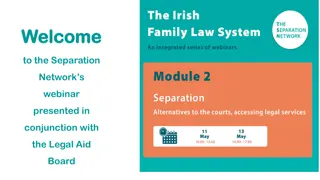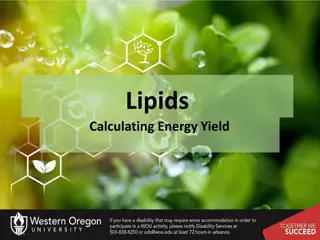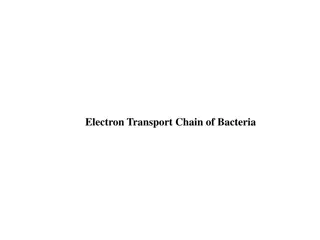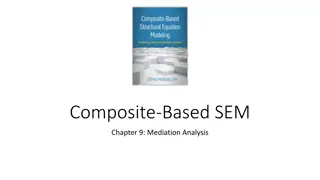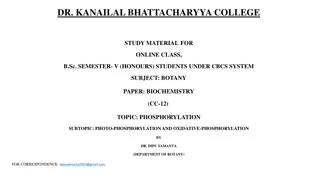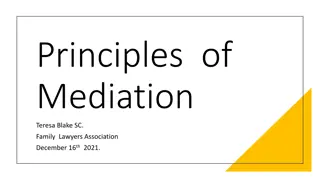
2020 Revised Curriculum and Assessment Plans for Electrical Technology Grades 10-12
Explore the 2020 revised curriculum and assessment plans for Electrical Technology Grades 10-12, covering Digital Electronics, Electronics, and Power Systems. This presentation outlines the purpose, amendments to content overview, annual teaching plan, and school-based assessment. Gain insights into essential core content, skills, and assessment planning to ensure effective teaching and learner preparation for the revised academic calendar.
Download Presentation

Please find below an Image/Link to download the presentation.
The content on the website is provided AS IS for your information and personal use only. It may not be sold, licensed, or shared on other websites without obtaining consent from the author. If you encounter any issues during the download, it is possible that the publisher has removed the file from their server.
You are allowed to download the files provided on this website for personal or commercial use, subject to the condition that they are used lawfully. All files are the property of their respective owners.
The content on the website is provided AS IS for your information and personal use only. It may not be sold, licensed, or shared on other websites without obtaining consent from the author.
E N D
Presentation Transcript
2020 REVISED CURRICULUM AND ASSESSMENT PLANS ELECTRICAL TECHNOLOGY GRADES 10-12 Implementation: June 2020
Presentation Outline 1.Purpose 2.Amendments to the Content Overview for the Phase; 3.Amendments to the Annual Teaching Plan; 4.Amendments School Based Assessment (SBA) 5.Conclusion
1. Purpose To mediate the amendments of the trimmed and re- organised 2020 Annual Teaching Plan including School Based Assessment for Electrical Technology: Digital Electronics, Electronics and Power Systems Grade 10-12 for implementation in June 2020 as stipulated in Circular S2 of 2020. To ensure that meaningful teaching proceeds during the remaining teaching time as per the revised school calendar. To assist teachers with sequencing of curriculum content and assessment. guided pacing and
1. Purpose (continued) To enable teachers to cover the essential core content /skills in each grade within the available time. To assist teachers with planning for the different forms of assessment. To ensure learners prepared for the subsequent year/s in terms of content, skills, knowledge, attitudes and values are adequately
2. Amendments to the Content Overview for the Phase
Summary: Amendments to the Content Overview for the Phase Grade 10 Grade 11 Grade 12 Occupational Health and Safety Responsibilities, Workshop Rules & Procedures Occupational and Safety Introducing the OHS Act, Machinery Regulations and Electrical Machinery Regulations Health Occupational Health and Safety The consequences of the OHS Act, risk assessment, human rights in the workplace, work ethics and emergencies Semiconductor Devices Introduction of Integrated Circuits The 741 Op-amp The 555 Timer Tools and measuring instruments Tools and how to use them Tools and measuring instruments Measuring instruments and how to use them
Summary: Amendments to the Content Overview for the Phase Grade 10 Grade 11 Grade 12 Basic Principles of Electricity Introduction of electricity as the core of the subject Waveforms Introduction of waveforms, pulse technique and wave shaping as an approach to electronics RLC The effect of AC on Series RLC Circuit Switching Circuits Electronic Switching Circuits using the 555 Timer and 741 Op-Amp Power Sources Basic power sources such as the battery and how they operate Digital and Sequential Devices Decoders and encoders, principles of combinational circuits without memory, principles of memory elements, counters and registers
Summary: Amendments to the Content Overview for the Phase Grade 10 Grade 11 Grade 12 Electronic Components Basic electronic components and how they operate Semiconductor Devices Introduction of components and solid state devices Microcontrollers History of Microcontrollers, Hardware, Software and PICAXE using Logicator as an approach to programming PICS Logics Boolean Logic and basic Logic gates with their applications Logics Boolean Logic, Karnaugh Maps, Logic Probes, RTL, TTL and Logic ICs
Summary: Amendments to the Content Overview for the Phase Grade 10 Grade 11 Grade 12 Communication Systems Basic communication principles, antenna systems and modulation Principles of Magnetism Principles of magnetism and the relevant laws Power Supplies Sensors and Transducers Sensors and transducers as the interface between real world conditions and electronic circuitry
Summary: Amendments to the Content Overview for the Phase Grade 10 Grade 11 Grade 12 Communication Systems Communication Systems No amendments Content Reorganised to be completed within the time frames allocated
Summary: Amendments to the Content Overview for the Phase Grade 10 Grade 11 Grade 12 Communication Systems Communication Systems No amendments Content Reorganised to be completed within the time frames allocated Communication Systems Tuned Circuits, Transmitters and Receivers and their basic principles of operation
3. Amendments to the Annual Teaching Plan
Summary: Reorganisation of content topicsTerm2-4 Grade 10 Grade 11 Grade 12 Microcontrollers Semiconductors Electronic Components Logics Logics Power Supplies Sensors and Transducers REFER TO ANNUAL TEACHING PLAN FOR THE CHANGES
Summary: Content/Topics Amended Amendment GRADE10 Communication Systems Removed Grade11 Ammendment Communication systems Removed
Summary: Revised Programme of Assessment Grade 10 & 11 Term 1 Term 2 Term 3 Term 4 1 Assignment = 10% (50 marks) 1 Exam = Cancelled 1 Test = 15% (50 marks) Final Exam = 50% (200 marks) Summary: Revised Programme of Assessment Grade 12 Term 2 Term 1 Term 3 Term 4 1 Test = 10% (50 marks) 1 Exam = Cancelled 1 Trial Exam = 15% (200 marks) Final Exam = 50% (200 marks)
Summary: Revision Final Examination Structure Grade 10 Topic Grade 10 (Revised) Percentage Marks +/- 4 Occupational Health and Safety Tools and measuring instruments Basic Principles of Electricity Power Sources Electronic Components Logics Principles of Magnetism Communication Systems Total 5% 12.5% 20% 12.5 15% 20% 15% 0% 100% 10 25 40 25 30 40 30 0 200 Marks
Summary: Revision Final Examination Structure Grade 11 Topic Grade 11 (Revised) Percentage Marks +/- 4 10 10 40 30 30 45 20 15 0 200 Marks Occupational Health and Safety Tools and measuring instruments Logics Waveforms RLC Semiconductor Devices Power Supplies Sensors and Transducers Communication Systems Total 5% 5% 20% 15% 15% 22.5% 10% 15% 0% 100%
Summary: Revision Prep Examination Structure Grade 12 Topic Grade 12 Prep (Revised) Percentage Marks +/- 4 10 55 40 55 40 200 Marks Occupational Health and Safety Switching Circuits Semiconductor Devices Digital and Sequential Devices Microcontrollers Total 5% 27.5% 20% 27.5% 20% 100%
Summary: Revised Practical Assessment Task (PAT) Grade 10-12 Term1 Term2 Term3 Term 1: 2 simulations = 12% Term 2: 1 simulation = 6% Term 3: The theoretical part of Project Part 1 & 2 excluding the manufacturing part = 7%
2. Amendments to the Content Overview for the Phase
Summary: Amendments to the Content Overview for the Phase Grade 10 Grade 11 Grade 12 Occupational Health and Safety Responsibilities, Workshop Rules & Procedures Occupational and Safety Introducing the OHS Act, Machinery Regulations and Electrical Machinery Regulations Health Occupational Health and Safety The consequences of the OHS Act, risk assessment, human rights in the workplace, work ethics and emergencies RLC Tools and measuring instruments Tools and how to use them Tools and measuring instruments Measuring instruments and how to use them
Summary: Amendments to the Content Overview for the Phase Grade 10 Grade 11 Grade 12 Basic Principles of Electricity Introduction of electricity as the core of the subject Waveforms Introduction of waveforms, pulse technique and wave shaping as an approach to electronics RLC The effect of AC on Series RLC Circuit Semiconductor Devices Introduction to the FET, UJT, Darlington, 741 Op-Amp and 555 Timer Power Sources Basic power sources such as the battery and how they operate Switching Circuits Electronic Switching Circuits using the 555 Timer and 741 Op-Amp
Summary: Amendments to the Content Overview for the Phase Grade 10 Grade 11 Grade 12 Electronic Components Basic electronic components and how they operate Semiconductor Devices Introduction of components and solid state devices Power Supplies Principle of operation of linear power supplies, series and shunt using regulation Amplifiers Principle of operation and application of discrete component amplifiers and oscillators Logics Boolean Logic and basic Logic gates with their application
Summary: Amendments to the Content Overview for the Phase Grade 10 Grade 11 Grade 12 Communication Systems Basic Communication principles antenna systems and modulation Principles of Magnetism Principles of magnetism and the relevant laws Amplifiers Principles ofoperation and application of transsitor amplifier Sensors and Transducers Sensors and transducers as the interface between real world conditions and electronic circuitry
Summary: Amendments to the Content Overview for the Phase Grade 10 Grade 11 Grade 12 Communication Systems Tuned circuits.Transmitters and Receivers and their basic principles of operation
Summary: Amendments to the Content Overview for the Phase Grade 10 Grade 11 Grade 12 Logics Communications No amendments Content Reorganised to be completed within the time frames allocated
Summary: Re-organisation of content topics Term2-4 Grade 10 Grade 11 Grade 12 Power Sources Semiconductors Switching Circuits Power Supplies Ampllifiers Electronic Components Communication Systems Amplifiers Principles Of Magnetism Sensors & Transducers REFER TO ANNUAL TEACHING PLAN FOR THE CHANGES
Summary: Content/Topics Amended Amendment GRADE Grade 10 :Logics Removed Grade 11: Communication Systems Removed
4. Amendments School Based Assessment (SBA)
Summary: Revised Programme of Assessment Grade 10 & 11 Term 1 Term 2 Term 3 Term 4 Final Exam = 50% (200 marks) 1 Assignment = 10% (50 marks) 1 Exam = Cancelled 1 Test = 15% (50 marks) Summary: Revised Programme of Assessment Grade 12 Term 1 Term 2 Term 3 Term 4 Final Exam = 50% (200 marks) 1 Test = 10% (50 marks) 1 Exam = Cancelled 1 Trial Exam = 15% (200 marks)
Summary: Revision Final Examination Structure Grade 10 Grade 10 (Revised) Topic Percentage Marks +/- 4 10 25 40 25 30 40 30 200 Marks Occupational Health and Safety Tools and measuring instruments Basic Principles of Electricity Power Sources Electronic Components Communication Systems Principles of Magnetism Total 5% 12,5% 20% 12,5% 15% 20% 15% 100%
Summary: Revision Final Examination Structure Grade 11 Grade 11 (Revised) Percentage Topic Marks +/- 4 10 10 30 30 45 20 Occupational Health and Safety Tools and measuring instruments 5% 5% 15% 15% 22.5% 10% Waveforms RLC Semiconductor Devices Power Supplies Sensors and Transducers Amplifiers Total 7.5% 20% 100% 15 40 200 Marks
Summary: Revision Prep Examination Structure Grade 12 Grade 12Prep exam) Percentage Topic Marks +/- 4 10 50 20 60 60 200 Marks Occupational Health and Safety 5% 25% 10% 30% 30% 100% RLC Semiconductor Devices Switching Circuits Amplifiers Total
Summary: Revised Practical Assessment Task (PAT) Grade 10-12 Term1 Term2 Term3 Term 1: 2 simulations = 12% Term 2: 1 simulation = 6% Term 3: The theoretical part of Project Part 1 & 2 excluding the manufacturing part = 7%
Amendments to the Content Overview for the Phase
Summary: Amendments to the Content Overview for the Phase Grade 10 Grade 11 Grade 12 Occupational Health and Safety Responsibilities, Workshop Rules & Procedures Occupational and Safety Introducing the OHS Act, Machinery Regulations and Electrical Machinery Regulations Health Occupational Health and Safety The consequences of the OHS Act, risk assessment, human rights in the workplace, work ethics and emergencies RLC Tools and measuring instruments Tools and how to use them Tools and measuring instruments Measuring instruments and how to use them
Summary: Amendments to the Content Overview for the Phase Grade 10 Grade 11 Grade 12 Basic Principles of Electricity Introduction of electricity as the core of the subject DC Machines Introducing of DC machines, their construction and operating principles Single Phase AC Generation How electricity is generated Three Phase AC Generation Power in three phase systems, measurement and calculations Three Phase Transformers Principles of operation, calculations and application Power Sources Basic power sources such as the battery and how they operate
Summary: Amendments to the Content Overview for the Phase Grade 10 Grade 11 Grade 12 Electronic Components Basic electronic components and how they operate Single-phase Transformers Induction, the operation of transformers and types of transformers Three Phase Motors & Starters Principle of operation, testing and commissioning and starters Domestic Installations Control Devices Motor Control and Programmable Logic Control
Summary: Amendments to the Content Overview for the Phase Grade 10 Grade 11 Grade 12 Single Phase Motors The Universal Motor, spit phase motor and their application Power Supplies DC Power supplies, Semiconductors, the Zener Diode, rectification and regulating voltage using a transistor
Summary: Amendments to the Content Overview for the Phase Grade 10 Grade 11 Grade 12 Power sources Control Devices No amendments Content Reorganised to be completed within the time frames allocated Electronic components
Summary: Re-organisation of content topics Term2-4 Grade 10 Grade 11 Grade 12 RLC PLC Domestic Installations Single Phase Motors REFER TO ANNUAL TEACHING PLAN FOR THE CHANGES
Summary: Content/Topics Amended Amendment GRADE 10 Power sources Removed Electronic Components The Capacitor content Removed
4. Amendments School Based Assessment (SBA)
Summary: Revised Programme of Assessment Grade 10 & 11 Term 1 Term 2 Term 3 Term 4 Final Exam = 50% (200 marks) 1 Assignment = 10% (50 marks) 1 Exam = Cancelled 1 Test = 15% (50 marks) Summary: Revised Programme of Assessment Grade 12 Term 1 Term 2 Term 3 Term 4 Final Exam = 50% (200 marks) 1 Test = 10% (50 marks) 1 Exam = Cancelled 1 Trial Exam = 15% (200 marks)






